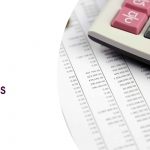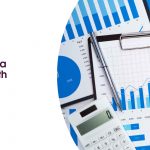How to Use Information From Your POS And Improve Your Business
A point-of-sale system for your retail business is far more than just a cash register. You can take payments and perform product exchanges. Moreover, with each transaction, your POS is picking up multiple bits of information that could be used to improve your business. POS data is a valuable tool for merchants looking to optimize their business.
Take a look at some POS data that can bring more customers through your doors, optimize your marketing efforts, and give you deep insights into your ideal customer:
Inventory
The right POS system will automatically reconcile your inventory after each transaction. Track stock counts, and automatically stop selling products when your inventory runs out. And whether a purchase is made online or in your store, your POS can track each transaction and adjust your inventory numbers accordingly. Your POS can offer you valuable data on the availability of different products, their location (if you have multiple stores or warehouses for your products), and any movement between locations. Such immediate transparency into your inventory levels allows you to adjust your product buying.
Purchase order history
A customer’s order history lists all their previous product orders. You can track the specific items they purchased and how much each costs, along with information about the customer and when they bought the products. Search this data by product, customer, or date to get a different view and uncover any trends.
Data on order histories can help you plan out of many of your promotions and marketing campaigns. Order histories can give you more insights into what works when it comes to making the most sales.
Sales trends
A point of sale’s primary purpose is to make sales, and obviously any POS is going to track all the purchases that flow through your store. And while this is a seemingly basic function, retailers can glean all sorts of valuable POS data from sales. Sort through the data based on time of day, days of the week, months of the year, and seasonally. You can spot trends, certain patterns and identify customers’ buying habits. Making note of these data points can reveal some ways to optimize your hours of operation to make sure of peak sale hours and days, and staff your store appropriately based on the most productive sales days.
Returns and exchanges
While product returns are a retailer’s least favorite task to perform, some level of returns, exchanges, and refunds is normal for any retailer. Using your POS data can help you gain some serious insights into the reasons behind refunds. Pulling regular reports on these activities can reveal a variety of trends. Take a look at any specific products that are regularly returned or exchanged, and make a note of the reasons. Also, take note of the type of refund customers prefer. Most POS systems allow merchants to refund past orders to the original payment method or make exchanges for store credit. This kind of POS data can help you make small changes, like eliminating certain products from your shelves, that could make a big impact your revenues.








